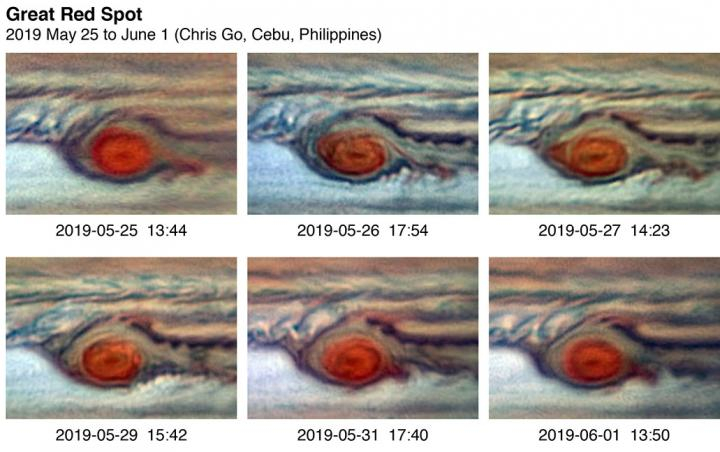The shrinking of the clouds of the Great Red Spot on Jupiter as documented with photographic evidence from the last decade, however, is not chaning or on its demise as claimed by some scientists, said experts. They said that there is no evidence the vortex itself changing in size or intensity indicating the demise of red vortex and they are rather exaggerated without revealing the whole story.
Philip Marcus, from the University of California, Berkeley, said the pictures from astronomers, both professionals and amateur, are not fully representational about the Great Red Spot. He pointed it out during his paper presentation session, titled 'The Shedding of Jupiter's Red Flakes Does Not Mean It Is Dying,' at the American Physical Society's Division of Fluid Dynamics 72nd Annual Meeting on Nov. 25 at the Washington State Convention Center in Seattle.

Marcus said the visible clouds hide the true size of the vortex of the Great Red Spot. In the spring of 2019, observers took images of large red "flakes" being ripped from the familiar red spot, but Marcus said the flaking phenomena is a very natural state of a vortex with cloud coverage. He ruled out that it was an indication of the Great Red Spot's death, as made out in the media.
Exaggerated reports
"I don't think its fortunes were ever bad. It's more like Mark Twain's comment: The reports about its death have been greatly exaggerated," said Marcus. Actually smaller cloud formation bumped into the Great Red Spot and remained stagnant sometimes with the velocity stopping and restarting and going off in different directions, he explained the process. These stages indicate an approaching cloud shattered and created the flakes that were observed by astronomers.
"The proximity of the stagnation points to the GRS during May and June does not signify its demise. The creation of little vortices to the east, northeast of the GRS during the spring of 2019 and their subsequent merging with the GRS with some does not signify its demise," he reiterated in his presentation.
In fact, a secondary circulation due to the heating and cooling above and below the vortex will allow the Great Red Spot to continue to exist over the centuries, fighting off decay of its energy from viscosity, turbulence and heat loss, insisted Marcus.









